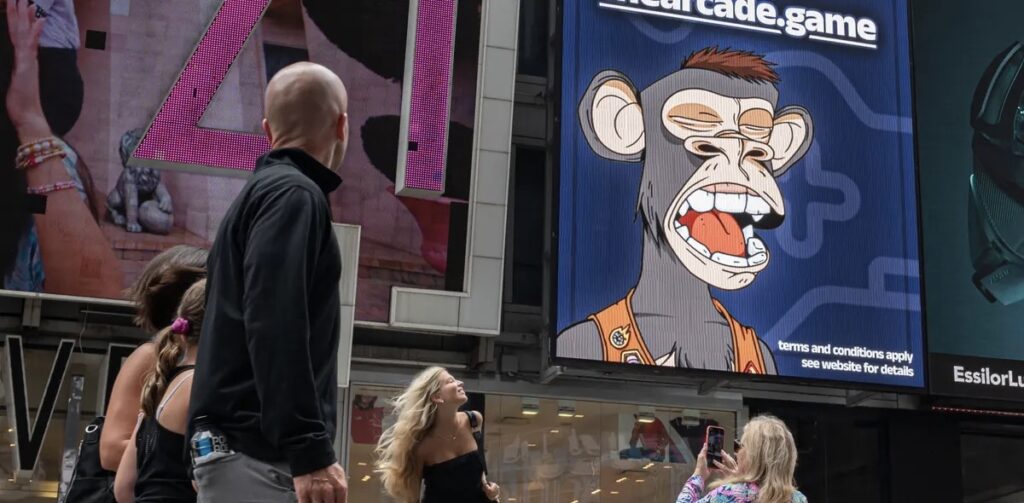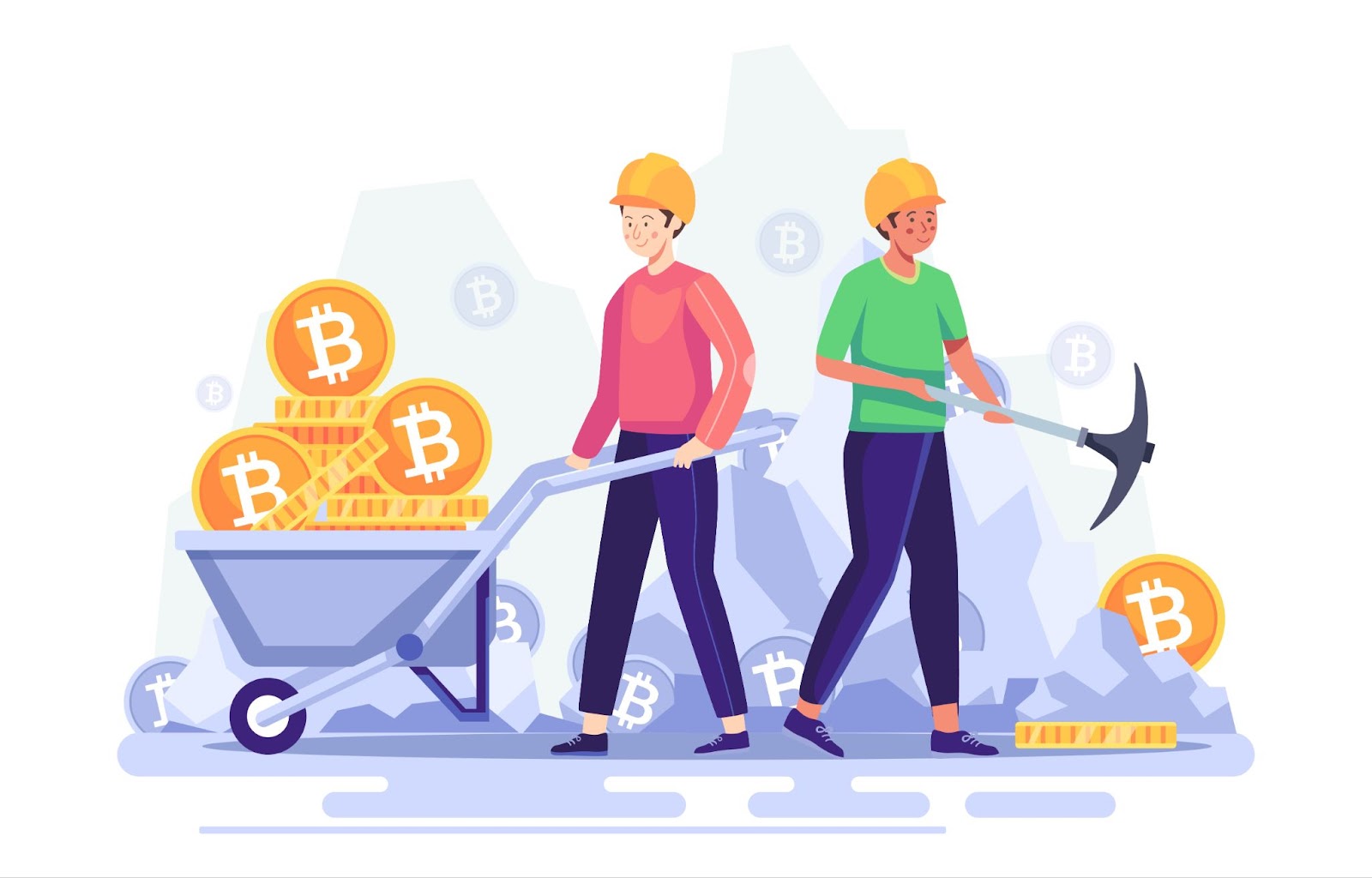The realm of Non-Fungible Tokens (NFTs) is a volatile playground, frequented by dramatic swings in activity and popularity. This landscape has been punctuated by instances of scams and hacks, contributing to a narrative of uncertainty around NFTs. As one traverses the digital terrain of tokens, the downturn in NFT enthusiasm presents itself as a recurring theme.
The Unfolding Saga of the NFT Market Dip
The story surrounding the NFT market decline is far from simple, with numerous fluctuations marking its trajectory. The market, which thrives on the sale and exchange of these unique digital assets, has observed a consistent wane in both activity and appeal.
Despite their initial dazzle, NFTs have found themselves in a somewhat downward spiral. This trend, unlike a passing storm, has persisted, deeply influencing the market dynamics.
The Persistent Plunge: An Uninterrupted Decline
Devoid of any substantial revival, the NFT market has been on a consistent downhill journey since its apex a couple of years back. However, the real shock to the system occurred in August 2021, when trading volumes for these digital assets astonishingly peaked at $2.8 billion. A number that was once seen as an indicator of the NFT market’s robust vitality now stands as a stark reminder of its ongoing struggle.
Post the explosive peak of August, the NFT market’s descent has been almost unhindered, stirring unease amongst market participants. As they scramble to make sense of the situation, the need for a strategic approach to navigate this setback has become ever more prominent.
Strategies for Survival
In this ever-evolving market, participants need to stay updated and vigilant. Here are some useful tips to weather the storm:
- Stay Informed: Keep abreast with the latest news and trends in the NFT space. Understanding market trends can help anticipate shifts and plan accordingly;
- Diversify Your Portfolio: Don’t put all your eggs in one basket; diversify your investments across a range of digital assets to minimize risk;
- Vigilance Against Scams: Beware of falling for scams. Always verify the credibility of platforms and sellers before making transactions.
Concluding Thoughts
The NFT market, like any other, is subject to booms and busts. The ongoing downturn should not deter enthusiasts, but give them an opportunity to learn and strategize for future market dynamics. While the current scenario may seem gloomy, one must remember that the darkest hour is just before the dawn. With cautious optimism, strategic planning, and a keen understanding of the market, survival in this tumultuous period is entirely possible, setting the stage for a potentially brighter future.
Decoding the Digital Market: A Deep Dive Into NFT Statistics
In a comprehensive analysis conducted by DappGambl, a total of 73,257 Non-Fungible Tokens (NFTs) were scrutinized to assess the current state of the market. The results were quite startling.
Of the vast number of NFTs examined, an overwhelming 69,725 were valued at an equivalent of 0 Ethereum – essentially holding no worth. This appraisal, unfortunately, left over 23 million users grappling with investments that had plummeted to worthlessness.
A key observation was the stark imbalance between the demand and supply of NFTs. The demand for these unique digital assets paled in comparison to their abundant availability. A staggering 79% of the scrutinized NFTs were unsold, translating to 4 out of every 5 NFTs stuck in digital limbo.
The underlying details of the study were even more alarming. Less than 1% of the evaluated NFTs boasted a price tag higher than $6,000, while 41% were modestly priced between $5-100. These figures, when contrasted with the NFT boom era, were significantly dwarfed.
In the words of the study, “This daunting reality should serve as a sobering check on the euphoria that has often surrounded the NFT space. Amid tales of digital art pieces fetching millions and instant success stories, the fact that the market is riddled with pitfalls and potential losses is one that is easily neglected.”
Navigating the NFT Market: Tips and Tricks
While the current state of the NFT market appears grim, the following tips could prove helpful in mitigating risks and maximizing potential gains:
- Stay Updated: Keeping tabs on the latest news and trends in the NFT space can provide insights into market shifts and future prospects;
- Diversify Investments: Spreading investments across a variety of digital assets can help hedge against the risk of any single NFT plummeting in value;
- Be Cautious: Avoid succumbing to scams by thoroughly researching and verifying the reliability of NFT platforms and sellers.

Understanding the NFT Market Dynamics: The Rise and Fall
The Non-Fungible Token (NFT) market experienced a meteoric ascent from 2021 to early 2022, clocking in a dizzying duration of just 1.5 years. However, all was not well in this digital paradise.
The rapid growth of the market was an economic spectacle that adhered rather closely to the phenomena known as “bubble burst”. A term popular in economics, it succinctly captures the sequence of swift market inflation hastily followed by sharp deflation.
Untangling the Bubble Burst: How the NFT Crash Unfolded
To fully understand how the NFT market crash occurred, it is essential to break down the process into five notable stages:
1. The Genesis: Displacement
The genesis of an economic bubble usually begins with the displacement stage. Here, a novel technology or groundbreaking innovation captures the public’s attention due to its incredible promise of high returns on investment. In the case of NFTs, the tech-savvy crowd wasn’t the only group magnetized by this potential; high-profile celebrities, influencers, and the media also played a critical role in propelling NFTs into the mainstream.
2. The Upward Spiral: Boom
As word spreads and awareness expands, prices begin to ascend, and they don’t stop. Fueled by the irresistible human tendency of FOMO (fear of missing out), a frenzy of buying ensues. The number of investors surges exponentially, and even industry giants scramble to secure a place on the bandwagon.
3. The Pinnacle: Elation
Finally, the market achieves the summit. It’s an intoxicating blend of anticipation and uncertainty because no one truly knows when the euphoria will begin to evaporate, giving way to the inevitable decline.
4. The Initial Retreat: Withdrawal
This stage marks the beginning of the end. A faction of investors, satisfied with their healthy profits, start retracting their investments. At the same time, a collective apprehension begins to envelop the market, with whispers of an impending bubble burst growing louder.
5. The Escalating Fear: Panic
And then it happens. The prices of NFTs slump, and even if this downward spiral lasts only a day or two, it’s enough to trigger widespread panic. Now, every investor scrambles to liquidate their assets at any price they can get.
Tracing the Tracks: What Led to the NFT Market Meltdown
The recent downturn of the Non-Fungible Token (NFT) market is a complex issue. At its core, multiple contributing factors—ranging from impracticality and lack of originality to poor financial returns and regulatory uncertainty—have played crucial roles.
The Question of Utility and Value
One of the main reasons triggering the NFT slump is the perceived lack of tangible value offered by these digital assets. Most NFTs represent digital images of various objects – often cartoons or abstract art. For the average observer, these digital manifestations offer no real-world value or address any practical problem, rendering their utility considerably low.
The Scarcity of Originality
As the NFT market experienced exponential growth, a saturation point was inevitably reached. Amidst the glut of offerings, uniqueness became a rare commodity. Consequently, many NFT offerings were merely recycled versions of already available digital images. This phenomenon further diluted the credibility of NFTs and cast doubt on the integrity of the market.
The Resale Woes: A Story of Diminishing Returns
Investing in NFTs is akin to venturing into uncharted territory. The unpredictability and lack of price stability deter potential investors from pouring substantial funds into the market. The tale of Twitter founder Jack Dorsey’s first tweet serves as a cautionary tale. This tweet, transformed into an NFT, was sold to Iranian investor Sina Estavi for a staggering $2.9 million. However, when Estavi attempted to resell the same NFT, the highest bid he received was a meagre $280.
The Regulatory Void: An Arena of Uncertainty
NFTs exist in a regulatory gray area. Many countries either dismiss NFTs completely or do not provide a robust legal framework to govern their sale and exchange. This vacuum of regulations has given rise to nefarious activities such as scams, Ponzi schemes, and even money laundering. Such instances severely erode investor confidence and induce apprehension.
Steering Clear of Scams: Ensuring a Safe NFT Experience
The surge in NFT popularity has, unfortunately, sparked a parallel increase in scams. Individuals lured by the allure of the digital asset market can easily fall prey to fraudulent schemes if they aren’t careful. Here are a handful of precautions you can take to safeguard your investments in the world of NFTs:
Adopt Robust Security Measures
2-factor authentication (2FA) is a reliable way to add an extra layer of security to your online accounts, including those on NFT platforms. By enabling 2FA, you’ll ensure that only someone with access to both your password and your personal device can log into your account.
Use Hardware Wallets for Storage
Hardware wallets are physical devices designed to safely store digital assets. Unlike software wallets, which are vulnerable to hacking, hardware wallets offer superior security since they are offline and therefore impervious to online threats.
Verify Authenticity
Before investing in an NFT, take the time to verify its authenticity through rigorous cross-checks on the internet. This could include researching the creator of the NFT, checking its history and origin on the blockchain, and comparing it with similar listings on various platforms.
Be Wary of Too-Good-to-Be-True Offers
As the old adage goes, if something sounds too good to be true, it probably is. Offers that promise extremely high returns with minimal risk are often red flags. It’s important to rein in your greed and approach such opportunities with a healthy dose of skepticism.
Avoid Unregulated Platforms
Always deal with digital assets on legit platforms. Engaging in activities on the dark web or less-reputable sources can expose you to unnecessary risks. Stick with trusted, regulated, and well-established platforms for your transactions.
Final Reflections
The rollercoaster journey of Non-Fungible Tokens (NFTs) from soaring heights to its dramatic crash offers a wealth of insights and lessons learned. It’s a stark reminder of the fickle nature of the digital asset market, where fortunes can be made and lost in the blink of an eye.
As the dust settles from the recent crash, the key to NFTs’ resurgence lies in diversification and real-world utility. So far, much of the NFT arena has been dominated by digital art. While art will continue to play an integral role, the potential for NFTs stretches far beyond this domain. From music and sports to real estate and identity verification, a host of new sectors stand ready to embrace the NFT revolution.
Simultaneously, bridging the gap between the digital and tangible realms will be crucial. NFTs that offer tangible benefits or experiences in the real world could be the game-changers, enhancing their appeal to a broader audience and boosting their perceived value.
Navigating the NFT landscape will continue to be a delicate balance between opportunity and risk. As we stand at this crossroads, the future of NFTs remains full of promise and potential. It will be fascinating to see how this space evolves and transforms in the coming months and years.



